A Caliph Without a Caliphate: The Biography of ISIS’s Leader Abu Ibrahim al-Hashimi al-Qurashi
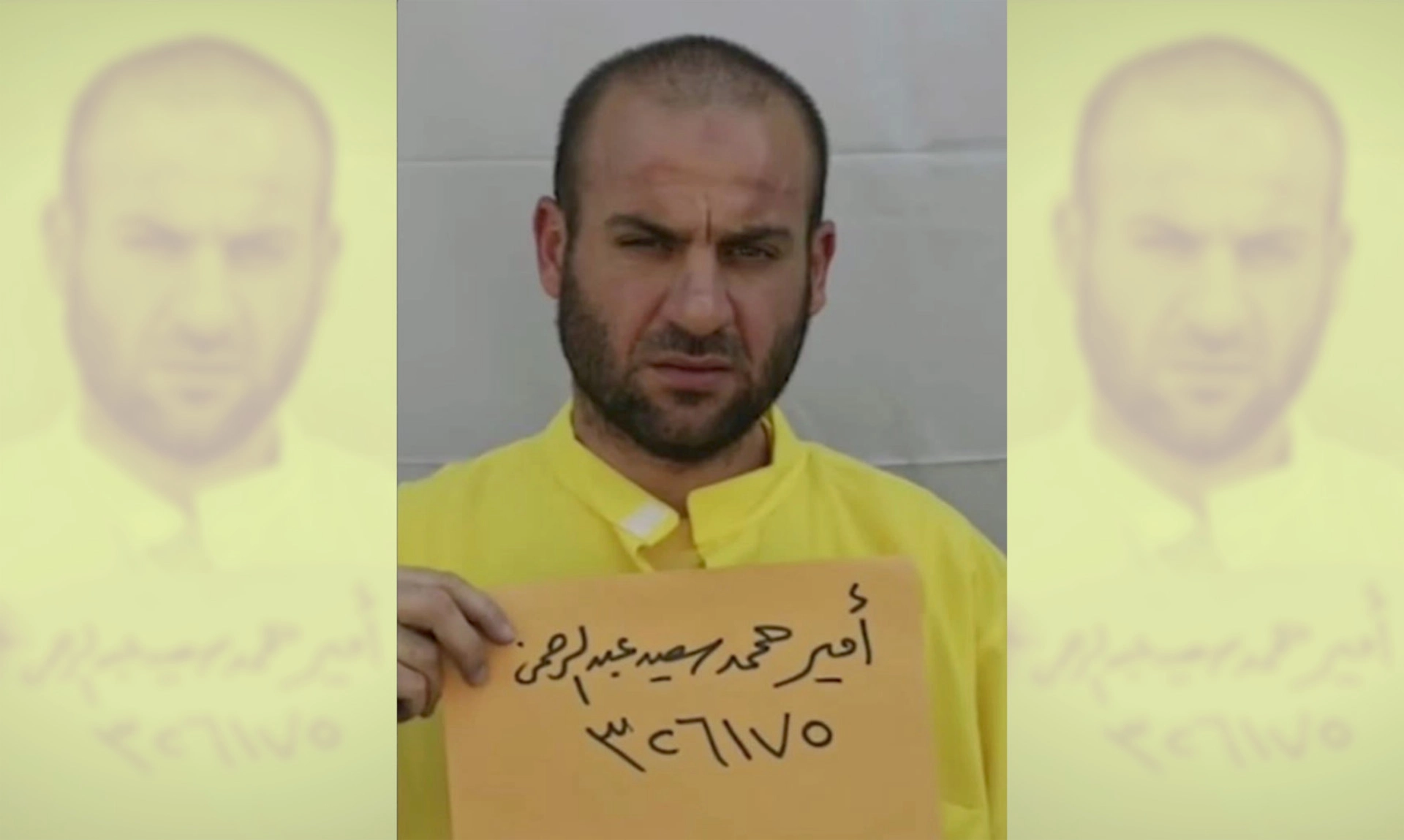
On March 23, 2019, Salem al-Jaburi found himself, along with a dwindling group of other Islamic State (ISIS) fighters, under siege in a small cave overlooking the last of their fortresses by the Euphrates River in Baghouz, in eastern Syria. He turned himself in soon after.
The Syrian Democratic Forces (SDF), a Kurdish-led force supported by the Global Coalition to Defeat ISIS, had taken the organization’s last stronghold in Syria and had already started removing the black flags of a group that committed countless atrocities and kept the world on edge for years.
Back then, it seemed as though the entire region was on the threshold of a new beginning, about to turn a page that had left deep scars on both sides of the border. It was a euphoric moment for many who had contributed to the defeat of ISIS, for the fall of Baghouz marked the symbolic end of the caliphate that had been declared nearly five years before. At least, that’s what everyone wanted to believe. As with all major events in the Middle East, what seemed like a closing chapter of one story was in fact just a prelude to another.
Most ISIS detainees I have met claim that organization leaders had no delusions as to their impending defeat; Abu Bakr al-Baghdadi had known it was coming, especially after ISIS lost the east side of Mosul, and had made arrangements accordingly in coordination with his would-be successor, Abdullah Qardash, whom they all concur is even more extreme in his positions than his predecessor.
A few months after the final defeat in Baghouz, al-Baghdadi appeared in a video filmed in an unknown location, which was later revealed to be his residence in Idlib, and it is believed that Qardash was one of three people who appeared in the same video with their faces blurred.
On Aug. 7, 2019, rumors surfaced from Iraq that al-Baghdadi was nominating Qardash to succeed him. The move was first shared publicly through a fake ISIS announcement, likely based on a real piece of information (Iraqi intelligence sources confirmed to me that al-Baghdadi put Qardash in charge just before his killing, as the circulated forged announcement suggested). Two months after the leak, al-Baghdadi was killed in a U.S. airdrop operation in Idlib’s countryside, and the organization announced Abu Ibrahim al-Hashimi al-Qurashi as his successor.
Both U.S. and Iraqi intelligence have confirmed that Abu Ibrahim al-Hashimi al-Qurashi is Abdullah Qardash or Hajji Abdullah, despite the organization’s reluctance to reveal any information about the man. Subsequently, the U.S. Department of Justice raised the reward for information leading to the identification or location of Qardash to $10 million.
Despite the scarcity of available and confirmed information on Qardash, I obtained a number of documents and pictures, made public in English by New Lines for the first time, that indicate he was in fact a leading figure among Iraqi jihadist groups over the past two decades who has steadily worked his way up the security and religious hierarchy within the Islamic State group.
According to two sources in Iraqi intelligence, Qardash is currently working undercover in SDF-controlled areas with the purpose of rebuilding the organization.
Around 20 miles west of Mosul lies the small town of Mahlabiya, a Turkmen-majority town, the confirmed birthplace of the new ISIS leader.
I explored what is known about the man’s life on the ground in Iraq, accompanied with the Falcons Intelligence Cell, an Iraqi intelligence unit. Maj “Ahmed,” whose real name could not be disclosed for security reasons, is tasked with finding out every possible detail about the organization’s current leader to help arrest or kill him. The officers and members of this cell are keen to conceal their identities, as they are considered important targets for ISIS given the significant role they played in dismantling its networks and arresting thousands of its members.
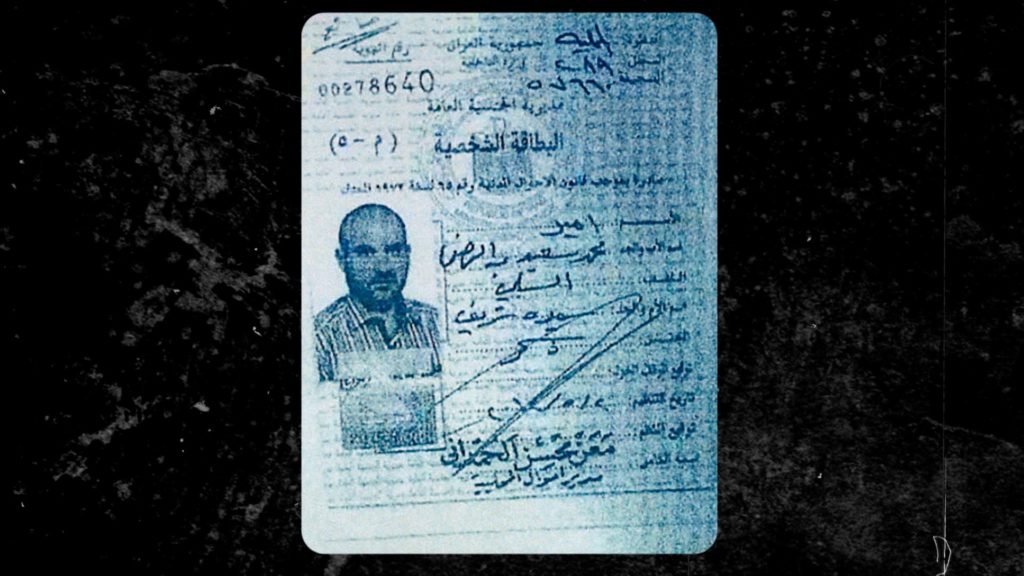
According to the cell’s records, Qardash’s real name is Amir Muhammad Sa’id al-Salbi al-Mawla. He was born in Mahlabiya, a subdistrict of Nineveh, in 1976 to a muezzin with two wives who bore him seven sons — of whom Amir is the youngest — and nine daughters. His father served as the imam of the Furqan Mosque in Al Baath neighborhood in Mosul from 1982 to 2001.
Just like al-Baghdadi, before assuming the ISIS leadership in 2010, Qardash remained in the shadows for years despite the fact he had long been prepared to assume a leading position in the organization, according to documents and testimonials I have accessed. Major Ahmed said Qardash was managing the affairs of the “caliphate” even before al-Baghdadi was killed and is known among the ranks as a man of intellect with a depth of knowledge when it comes to everything that has to do with the organization, as he started working with ISIS in the 2003-2004 period.
Several Iraqi intelligence officials say al-Baghdadi kept Qardash away from the battlefield with the intention of protecting him so he would lead ISIS in the future, particularly because of his academic study of Islam, his two-decade history as part of jihadist groups, and his detailed, firsthand knowledge of the organization’s structure.
A detainee I shall refer to as “Omar” said he met Qardash three times when he was at the top of the security apparatus of ISIS in Mosul. Qardash held the position of “state judge” (equivalent to the role of justice minister) and supervised the Diwan al-Jund (the department of soldiers), as well as ISIS’s other dozen diwans. Omar recognized him in an old photograph, confirming that he is indeed Abdullah Qardash. Omar said Qardash looked much different later, as he grew a long beard and would always wear a turban with his military uniform. He also carried a weapon wherever he went.
Qardash was tasked with establishing an institute for training judges and clergymen in the campus of al-Imam al-Adham College in Mosul, with the intention of ensuring the sustainability of the organization’s guiding thought and doctrine.
Records from the Falcons Intelligence Cell show that Qardash used to give frequent lectures at the institute, where one of his colleagues was Abdul Rahman al-Qaduli, more commonly known as Abu Ali al-Anbari, one of ISIS’s leading figures at the time.
As operations by the Coalition began in 2015, a number of the organization’s top leaders were killed. Among them were Abu Mutaz al-Qurashi, known as Muslim al-Turkmani, al-Baghdadi’s deputy at the time, whose car was hit by an airstrike in Mosul in August 2015, and al-Anbari, a veteran jihadist like Qardash, who was killed in a clash with U.S. forces on his way back to Iraq from Syria in March 2016.
With the deaths of those two men in particular, Omar said, in addition to other top and mid-level leaders in general, al-Baghdadi had no choice but to rely on Qardash, whose wide religious, security, and organizational knowledge made him a suitable fit as second-in-command.
Behind the scenes, deep conflicts were brewing between the organization’s Iraqi and foreign leaders, the full implications of which were not clear at the time, even though many of the detainees I have spoken to confirmed that such differences were a major reason the organization eventually frayed.
In August 2014, while ISIS was working on expanding its territorial control, it stormed the city of Sinjar, west of Mosul, and killed thousands of its Yazidi residents, capturing women and enslaving them under the guise of enforcing shariah and creating a crisis that continues to unravel today.
There were disagreements among ISIS leaders about the enslavement of Yazidi women, but Qardash — along with a group of the organization’s more extremist non-Iraqi leaders — insisted on it.
Al-Jaburi, a former personal companion to al-Baghdadi, witnessed the quarrels that took place at the time and said that al-Anbari was against the enslavement policy, especially because ISIS was still in its early stages, and believed the problematic consequences of such a step would far exceed its benefits. Qardash, however, was adamant; he believed such a measure was justified on the fundamentals of Islamic law and had been applied historically. He saw no harm in reviving the tradition. According to al-Jaburi, Qardash’s opinion went against that of the organization’s other Iraqi leadership and was more in tune with foreign leaders. The decision to enslave Yazidi women was eventually supported by al-Baghdadi.
Omar corroborated al-Jaburi’s account. He explained there were two committees, one in Iraq and the other in Syria, and the majority of the Iraqi committee had rejected the idea of enslaving Yazidi women because they were Iraqi and because they feared for their own women and families who may be targeted as revenge (i.e., the dispute was largely based on pragmatic or local, not religious, reasons). The Iraqi committee was also against the enslavement of Christian women, but the Syrian committee’s position was closer to al-Baghdadi’s, who had settled in the Syrian city of Raqqah at the time. As a compromise, al-Baghdadi decided that while Yazidi women would be enslaved, Christian women would not — a decision that was considered a victory for Qardash.
Such differences soon led to rifts within the close circle surrounding al-Baghdadi, and many attributed them to a growing trend within the organization of adopting the ideas of Saudi scholar Ahmad Ibn Omar al-Hazimi, especially after proponents of this school of thought issued a general fatwa excommunicating Muslim Sunni communities, which led to arrest and assassination campaigns that would later cause internal conflicts at a critical juncture in ISIS’s history.
These deepening dilemmas within ISIS coincided with the beginning of its military defeat, exacerbated by its loss of the western half of Mosul. When that happened, al-Baghdadi ordered all organization leaders to move to the Iraqi-Syrian border.
Omar said they exited Mosul, crossing through Tal Afar to Syria. Sources in Iraqi intelligence, as well as detainees from ISIS, confirm that as soon as al-Baghdadi reached the border city of al-Qa’im, he began working on restructuring the organization.
Al-Jaburi, who closely accompanied al-Baghdadi during that period, said that al-Baghdadi was certain the organization’s grip on territory (a stage of jihadist insurgency referred to as “empowerment”) was slipping and that he issued orders to security officials within the organization — as well as the figure referred to as Minister of War — to bring the “State” back to pre-“empowerment” mode, the era before “declaring” the state.
Some of the diwans were dismantled, and the numerous sub-states the organization had declared were merged into two large states, Syria and Iraq, which were divided into military districts. While some fighters decided to stay in the organization’s few remaining strongholds, others opted to return undercover to various towns and cities in Iraq or to settle in more remote areas where security was scarce.
Major Ahmed said that the organization’s top priority after this restructuring was to preserve two main pillars: ideology and funds, and when it came to the former, Abdullah Qardash was the man in charge.
Yet Iraqi forces did not allow the organization the time it needed to get its affairs in order. Al-Qa’im was attacked at the end of October 2017, prompting al-Baghdadi and other leaders, including Qardash, to flee across the border to Albu Kamal in Syria, where they witnessed the final blow to the territorial caliphate shortly after. Al-Baghdadi was killed and Qardash was named his successor, spurring waves of controversy among the ranks as to whether he was fit for the job.
The selection of Qardash led to a wide debate within ISIS, reaching as far as its members in prison, particularly around his ethnicity. Was he of Arab or Turkmen origin? The answer would determine his eligibility for such a role because the “caliph” must be a Qurayshi or descendant of the House of the Prophet Muhammad, and therefore an Arab.
I obtained the Iraqi nationality document issued in 1988 for the young Qardash, which cites his father’s and mother’s names (both died years ago) and their birthplace: the town of al-Shura in northern Iraq, which has a predominantly Arab population.
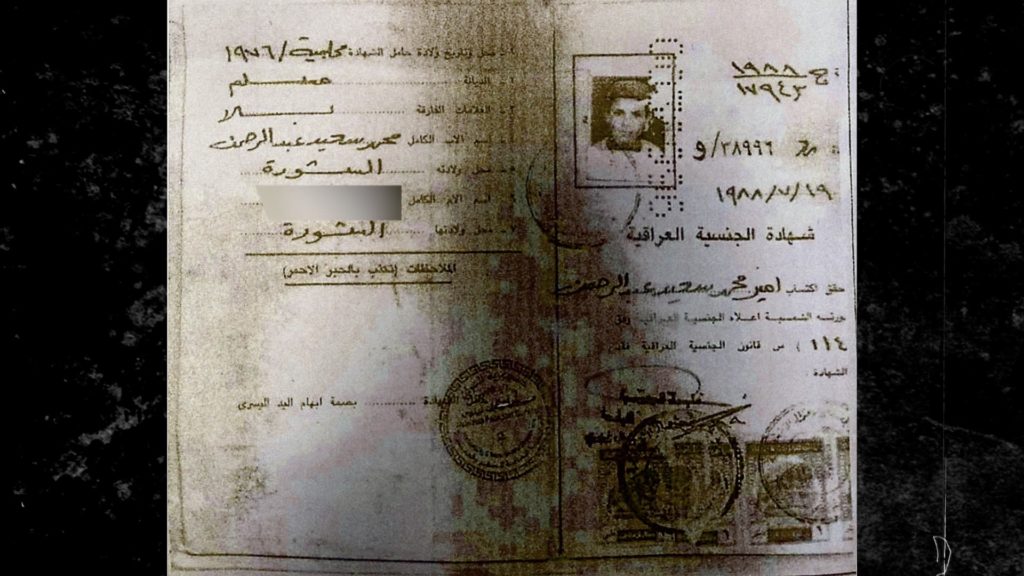
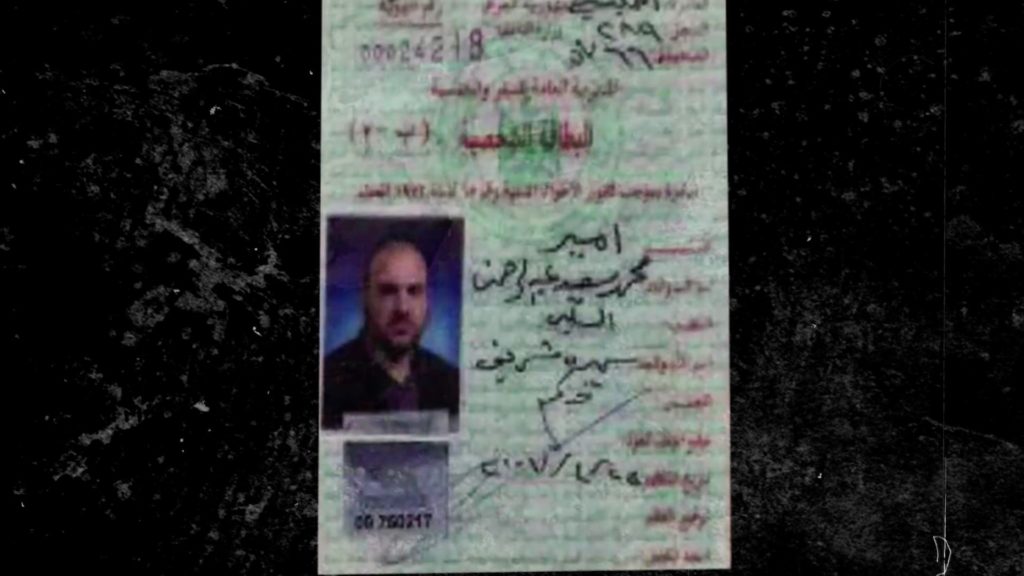
Yet the fact that his parents were born in al-Shura does not prove Qardash is of Arab origin; his ancestors could have easily migrated there from another part of Iraq. The village of Mahlabiya was an administrative division of al-Shura before Saddam Hussein’s regime restructured the governorate, rendering Mahlabiya a subdistrict of Nineveh instead.
Nineveh genealogy expert Nizar al-Saadoun tells me that the majority of Qardash’s clan, Al-Mawla in Nineveh — including the al-Mawlas of Mahlabiya — is of Arab origin, descendants of the Abbasid Burisha clan, and that they all go back to the Bani Hashim, the Prophet Muhammad’s tribe. (Al-Saadoun refused to go into detail about the genealogy of specific families to avoid any sensitivity or trouble among the involved clans.)
I learned that Qardash was keen to prove his Arab origin ever since he was in Mosul in 2015, which he did through a genealogist who later died. Until 2020, U.S. and Iraqi officials believed the new head of ISIS was a Turkman, a stunning revelation that was easily weaponized to undermine the integrity of the organization by casting Qardash as a pretender to the throne. In the summer of 2020, however, it became common knowledge that he was in fact of Arab origin, before the U.S. declassified documents containing transcripts of his interrogation in U.S. detention in Iraq from 2008.
A major part of military and security leadership in ISIS and al Qaeda came from these areas, particularly in neighboring Tal Afar. This region is home to hundreds of villages and towns with diverse ethnic, religious, and sectarian demographics, but many of its Sunni community — both Arab and Turkmen — consider their living conditions to have deteriorated with the fall of the Baathist regime in 2003 and the rise of the Shiite majority to power.
The mayor of Mahlabiya, Abdul Rahman Hassan al-Dawla, said the Iraqi branch of al Qaeda was established in 2004 in the same region, which includes Mahlabiya, Tal Abata, and Al-Hadar and stretches all the way to the Syrian border. The organization was met with a lot of support in the area; according to al-Dawla, there was “a societal willingness to embrace it.”
Al-Dawla also said Qardash was from a known Sufi family and had always been known to be peaceful. He believes it was increasing jihadist activities in the region that influenced Qardash, who moved to Tal Afar with his father as a child to continue his preparatory and secondary education before moving to Mosul later to attend university.
Documents that I obtained from the University of Mosul reveal that Qardash majored in Quranic studies and Islamic education and graduated with honors in 2000.
Immediately after graduating, he completed his military service for 18 months on the outskirts of Baghdad, which is when he joined up with jihadist groups. Before the fall of Saddam, he encountered Ansar al-Islam, an earlier Islamist group, in Iraqi Kurdistan through al-Anbari.
Ansar al-Islam, led by Fateh Krekar, was subjected to intensive shelling by U.S. forces during the invasion of Iraq in 2003. Its surviving leaders then formed Ansar al-Sunna, which moved its operations from the mountains of Kurdistan to fight against U.S. forces. Soon al-Anbari played a key role in convincing the group to declare its allegiance to al Qaeda in Mesopotamia, which was founded by Abu Musab al-Zarqawi in 2004, according to ISIS’s Al-Naba newspaper.
During a tour of Tal Afar, Major Ahmed showed me the places where Qardash lived during that stage, elaborating that al Qaeda had managed control of the city for some time between 2004 and 2005 before it was expelled, its leaders and members fleeing to other areas. It was then that Qardash moved back to Mosul.
In Mosul, Qardash earned a master’s degree in Islamic studies and quickly ascended the ranks of al Qaeda, especially after Zarqawi was killed in a U.S. airstrike in 2006 and his successor, Abu Omar al-Baghdadi, formed the Islamic State of Iraq.

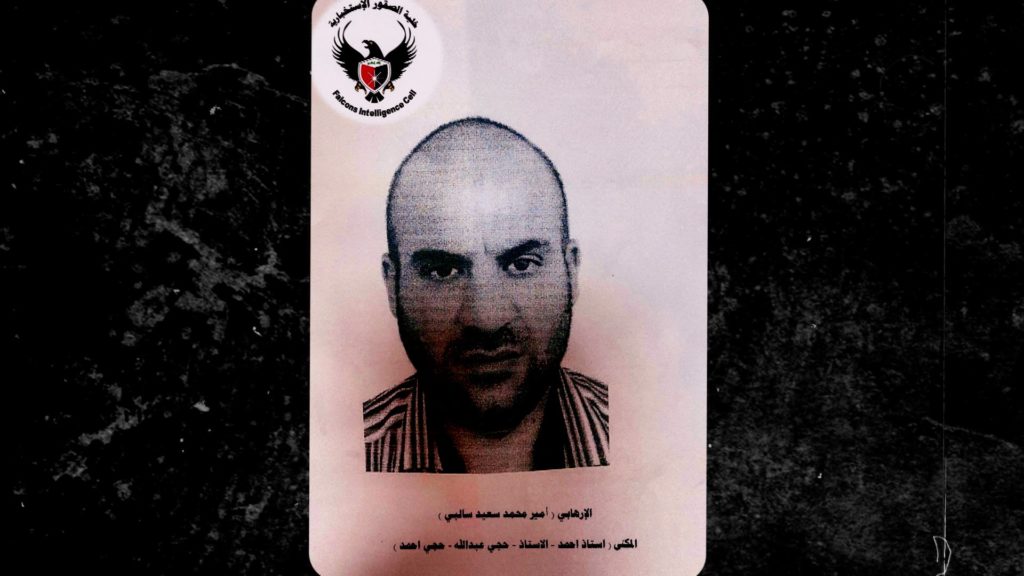
In 2007, Qardash, who at the time was also known as Professor Ahmad, was appointed general religious judge in Mosul, an important position with responsibility for many aspects of religious and judicial affairs. For a brief period, he also served as deputy to the emir of Mosul.
Major Ahmed said that, for some time, Qardash lived and gave frequent lectures in Mosul’s Furqan Mosque, situated in Al Baath neighborhood on the western side of the city — the same mosque where his father gave sermons before his death in 2001.
In early 2008, U.S. forces raided Qardash’s residence in Mosul and arrested him; he was jailed in Camp Bucca, a major U.S.-run detention center, where he was given the prison ID number 326175, according to Falcons Intelligence Cell records. Contrary to popular belief, it was not in Bucca that Qardash first met Abu Bakr al-Baghdadi, as the latter had already been released in 2004, after a yearlong detainment.
For months, Qardash was subjected to intense interrogation sessions by the Americans, some of which I gained access to through Iraqi intelligence. What I found most remarkable was his insistence that he joined the terrorist organization in 2007, not earlier, and that he was appointed general religious judge as soon as he became a member. Qardash also told his captors he was chosen as a deputy to the emir, Abu Omar al-Baghdadi, the same year.
In 2009, after the U.S. and Iraq signed the Status of Forces Agreement winding down the U.S. military presence in Iraq, detainees held in prisons managed by the occupying alliance were set free. Qardash was released under unclear circumstances.
In 2012, he was issued a second ID, of which I obtained a copy, that shows some changes to his appearance compared to his earlier photograph.
Major Ahmed said that as soon as he was released from prison, Qardash joined al-Baghdadi, who had assumed leadership of the organization after Abu Omar was killed and that he was once again appointed as religious leader in Nineveh.
After the withdrawal of U.S. forces, ISIS underwent major restructuring and was successful in attracting many new members. ISIS capitalized on the growing discontent that resulted from the suppression of protests in Sunni areas by the government of then-Prime Minister Nouri al-Maliki and the security vacuum created by the uprising in Syria, which led to the regime losing control over large territories adjacent to the Iraqi border.
Just before the U.S. withdrawal, and under mysterious circumstances, Amer al-Mawla, Qardash’s brother, who headed the Turkmen Student Union at the University of Mosul, was assassinated.
Al Qaeda was accused of being responsible, although security forces never proved its involvement in the operation. Qardash’s other brother, Adel, fled to Turkey after an arrest warrant was issued in his name.
According to Major Ahmed, Adel had long been active in the Iraqi Turkmen Front, and the security forces were after him because of “suspicious activities” in support of al Qaeda.
Adel remained publicly active with the Iraqi Turkmen Front in Turkey until his brother was named as al-Baghdadi’s successor. Even though there are some pictures of him on the Front’s official Facebook page, he no longer makes any public appearances and has become increasingly difficult to access. I couldn’t reach him for comment on the Iraqi forces’ accusations.
Qardash’s eldest brother, Ghanim, who worked at the Mahlabiya subdistrict office, died of health problems related to old age. His remaining brothers and sisters lead a normal life in Mosul, Tal Afar, and Mahlabiya, according to the Falcons Intelligence Cell, which possesses comprehensive information about each of them.
Qardash inherited a tired, dilapidated organization. Tens of thousands of its leaders and fighters had been killed, and many of those who survived were languishing in prisons across Iraq and Syria.
Prior to ISIS’s defeat in Baghouz, the group tried to conceal the infighting that was sparked by the objection of hundreds of foreign members to the public absence of al-Baghdadi as a leader, which culminated in the Iraqi leadership accusing the organization of sacrificing them and leaving them to face an unknown destiny.
Al-Jaburi was tasked with heading a force to quell the dissent, which he described as fitna (sedition). He said that nearly 350 individuals, whom he referred to as khawarij (renegades), had announced their intention to fight the organization and that they were eliminated when al-Baghdadi was still in the region.
Omar said that most of the defecting members were from Algeria and Tunisia. They were demanding that al-Baghdadi step down and a new caliph be appointed, leading to a difficult confrontation within the organization’s ranks when it was already under heavy fire by the Coalition.
Jails in Iraq and Syria are overflowing with prisoners from jihadist groups, most of whom are ISIS members. But despite the brutality and ultimate defeat of the project they imposed on the region, many of them still believe in violence as a means to achieve their aim: the establishment of an “Islamic caliphate” in accordance with their extremist beliefs.
Among the figures of high stature within the organization who were close to al-Baghdadi at the time is Hussam Naji, currently a prized detainee of the Falcons Intelligence Cell due to his notoriety as one of the organization’s top legislative figures and his close connections to its top-tier leaders.
When I met him in a high-security prison near Baghdad, Naji looked weak and exhausted. Later, I found out that the prison administration insisted on keeping him in solitary confinement on account of what they described as his “negative influence” on the rest of the detainees because he continuously urged them to continue holding on to their extremist ideas.
Naji was arrested only a few weeks after ISIS gained control of Mosul. Before that, he had been serving as the religious official in the city of Fallujah, which was under ISIS control at the time. One day, he received a call from an ISIS leader asking him to travel to Mosul where he was to be appointed the deputy state judge. However, the call was traced by security forces, and Naji was arrested before he could reach Mosul.
While Naji avoided answering my questions about Qardash, he made a point of listing the many misgivings he had about the selection of al-Baghdadi as caliph before Qardash, most importantly that the choice was not unanimous, and that, in his words, Qardash’s “detractors outnumbered his supporters.” However, Naji doesn’t deny that the declaration of the caliphate was a moment they had all long been waiting for.
Naji explains this is because the caliphate is not an end in itself; rather, it is a step that has to be achieved before the appearance of the Mahdi, an ordinary man with the name of Muhammad Ibn Abdullah, who according to Muslim traditions will rise during what is known as the “End of Time” and will “spread justice and True Islam, ridding the world of evil and injustice and fighting the enemies of religion.”
Thousands of prisoners maintain an unwavering belief in this idea. They are described by many think tanks and research centers specializing in the study of extremism as a “ticking bomb” that could explode at any moment if they ever manage to escape.
In July 2013, ISIS was able to free hundreds of detainees in an attack that targeted the Abu Ghraib and al-Hout prisons, including top-tier leaders who would later play a major role in planning and executing the operations that won the organization control over Mosul and several other Iraqi and Syrian cities in the year that followed.
Naji, like most of the detainees I have met, rejected the accusation that ISIS’s actions caused a full-blown crisis for Sunni Muslims in the region. He denied that ISIS had a direct hand in the destruction of many Sunni towns and cities in Syria and Iraq, displacing their residents and allowing Iranian-supported Shiite groups an unprecedented chance to control strategically vital territories on both sides of the border.
Most detainees argue that if it hadn’t been for the intervention by the Global Coalition, their project would never have been defeated, no matter how ardently local powers in Iraq and Syria had mobilized against them. They believe it was primarily the intensive air strikes and advanced intelligence hacks by the Coalition that brought them down, as well as the failure of the Sunni communities they ruled to support them. They make no acknowledgment of the atrocities they committed against those very same communities in the name of shariah when their towns and villages were under ISIS control.
Both the Falcons Intelligence Cell and the Iraqi Counter Terrorism Service agree that Qardash currently resides in areas controlled by the SDF, east of the Euphrates. The Counter Terrorism Service maintains that, occasionally, he also crosses the nearby border into Iraq.
The Coalition still carries out airdrop operations and ground raids every now and then in the areas stretching from the south of Hasakah to the Euphrates, and although it has announced the arrest and killing of some ISIS leaders, there was never any mention in their reports of Qardash being present in the area. It is also significant that large parts of this territory, adjacent to the Iraqi border, have had minimal security presence ever since the organization was expelled in 2018-2019 and have borne witness to assassinations and attacks almost daily.
The Counter Terrorism Service and the SDF both announced in separate statements in May 2020 that the Global Coalition had managed to kill Hajji Taysir, the organization’s “Governor of Iraq,” in an air strike that targeted his residence in Syria’s Deir ez-Zor province, east of the Euphrates. Both parties claimed they had offered intel disclosing his location.
However, I have found out from an Iraqi intelligence source with a close relationship to U.S. forces that Taysir — whose real name is Mu’taz Nu’man Abd Nayif al-Jaburi — is still alive, which may explain why his name remains among the U.S. Department of Justice’s list of Most Wanted Terrorists, with a reward of $5 million.
According to the Falcons Intelligence Cell, Qardash is currently working on a new leadership structure in collaboration with what is known as the “Delegated Committee,” the members of which include Qardash’s deputy Sami Jasim Muhammad al-Jaburi, known as Hajji Hamid, as head of committee; Bashar Khattab al-Sumaide’i, also known as Hajji Zaid; and Taysir; along with a group of the organization’s military district leaders, most of them Iraqi. The committee aims to rebuild the organization according to a set of tactics that varies from one place to another, depending on security conditions.
Major Ahmed explained that ISIS has gone back to a decentralized approach through small security subunits known in Iraq as rabtas (connectors) that follow the organization’s clandestine cell system. They are based in remote areas where they build makeshift cottages called madafat (safe houses) that serve as workstations. Their strategy is to drain security forces through sporadic attrition wars in wide, uninhabited areas; terrorize other Sunni factions to ensure no more Sahwa Sunni Militias (Awakening Councils) are formed; and drag Shiites into cycles of sectarian violence by targeting their shrines, as illustrated in various attempts by the organization at attacking Samarra.
The organization’s attacks differ from one place to another. In the Syrian desert, west of the Euphrates, where they still have control over certain areas within territories where the Syrian and Russian armies, as well as some Shiite factions, operate, attacks are more ruthless and often last for hours at a time. Such attacks often result in major losses, such as the one on New Year’s Eve that killed 40 Syrian army soldiers on their way home for the holidays.
Meanwhile, ISIS cells east of the Euphrates — where the Coalition operates — mostly target Arab tribe heads accused of collaborating with the SDF, particularly in the provinces of Deir ez-Zor, Hasakah, and Raqqah.
In Iraq, organization attacks against security forces have expanded to reach several governorates, such as Diyala, Salah al-Din, Kirkuk, and Nineveh, as well as some areas in Anbar. These attacks are usually fast and don’t leave security forces much opportunity to retaliate. Attacks by ISIS in these areas have also targeted dozens of clan figureheads believed to be working with security, as well as the Popular Mobilization Forces, which have become active there ever since the war against ISIS officially ended.
It has been two years since the organization last used car bombs in its attacks in Baghdad or other cities where intelligence services estimate it to have more mobility. This could be interpreted as an unannounced reappraisal by ISIS regarding the effectiveness of this approach. While the organization’s previous reliance on car bombs cost security forces significant losses during their battles to regain control of Iraqi cities, it often culminated in many Sunni civilian casualties. Even though the organization has maintained that civilian losses are religiously justifiable as collateral damage in similar situations since the early days of Zarqawi’s leadership, such losses have led to growing contempt among Sunni communities that the organization claims to represent.
Following the trajectory of ISIS operations since its defeat in Baghouz, it is apparent that the group has increasingly been targeting notable figures in Sunni communities in Syria and Iraq, whom it accuses of collaborating with security forces.
According to Pentagon estimates, nearly 10,000 ISIS fighters continue to roam free in both countries. And even though it can’t be easy for them to organize, given the current circumstances in the areas where they are active and despite communication difficulties between members and leadership, they still managed a series of attacks that left hundreds injured or killed.
However, Iraqi security services say that the numbers issued by several Western organizations — including the United Nations — have often been exaggerated, insisting that ISIS has suffered a massive blow and is now a lot weaker than it used to be.
Meanwhile, Lt. Gen. Abdul Wahab al-Saadi, head of the Iraqi Counter Terrorism Service, tells me that the remaining fighters are hiding in the desert and rugged areas, as well as in places with dense trees that make natural hiding places.
Saadi adds that Iraqi intelligence has all the details and information about the new ISIS leader but that he is no longer a threat, as detainees from the organization say they have pledged their allegiance to a “ghost”; whenever they are asked about their leader during interrogations, they say they do not know who he is or even what he looks like.
However, Major Ahmed agreed that was only true for the first few months that followed the selection of Qardash as a successor to al-Baghdadi, as the communication hurdles led to a delay in the receipt of what is known within the organization as bayat documents — papers declaring support to the new leader, carried in person by trusted members of the organization’s leadership. In areas such as Nineveh, Al-Badiya and Al-Jazeera, it took more than four months for the documents to be collected.
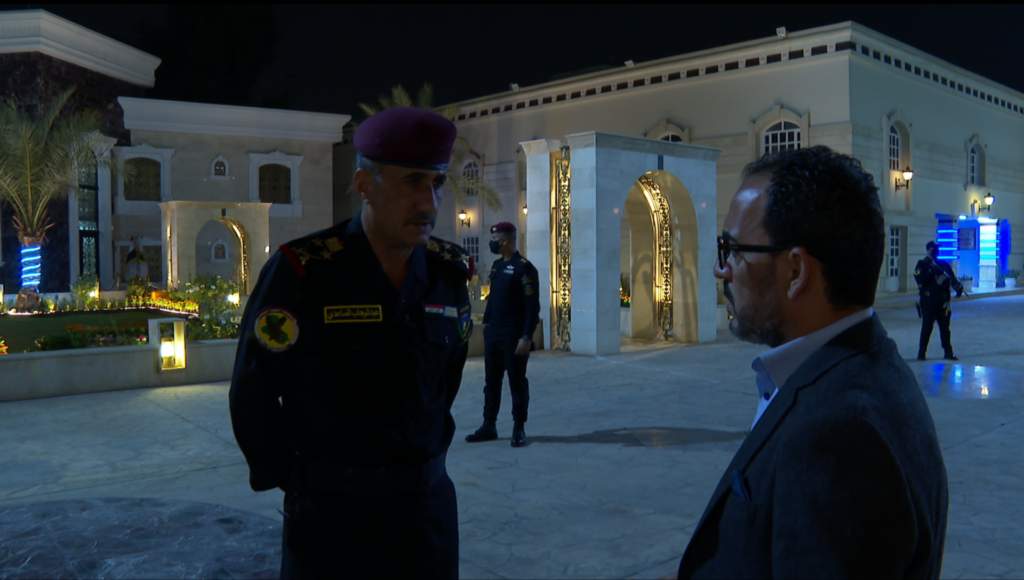
What remains certain is that the final chapter of this bloody experience has not yet been written. Much of what led to the establishment and expansion of this version of the jihadist phenomenon still exists, and the cracks in the structures of Iraq and Syria, ISIS’s most important strongholds, have been deepening without any national alternatives that would unite their people.
ISIS leaders have succeeded in investing in Sunni victimhood narratives in both countries, but they failed to estimate the balance of regional and international powers correctly, and as a result, their projects have backfired, creating a disaster of massive proportions, the ramifications of which continue to plague the entire region, specifically affecting its Sunni residents. In this context, how could Qardash, now a caliph without a caliphate, manage to ensure a different outcome this time around?
Many of the detainees I met throughout the years in Syria and Iraq fail to admit the defeat of ISIS. They insist that the idea of a state and the rise of the Islamic caliphate, which was established successfully in Syria and Iraq yet collapsed by global effort, have spread across the Islamic world from East Asia to West Africa.
Under Qardash’s leadership, the organization currently finds itself in a revisionary and preparatory state that could last for years, but with nearly 10,000 fighters in its ranks and the completion of U.S. withdrawal from Iraq and Syria in September bringing an end to anti-ISIS operations by the Global Coalition, it is only a matter of time before both countries witness yet another round of religious violence that one fears might spare nothing and no one.
The original piece was written for BBC Arabic online. You can find it here.
